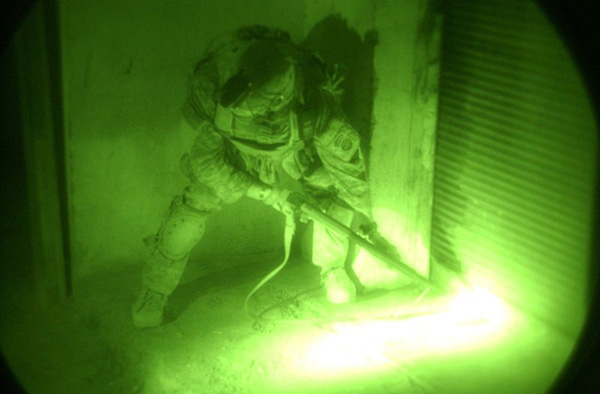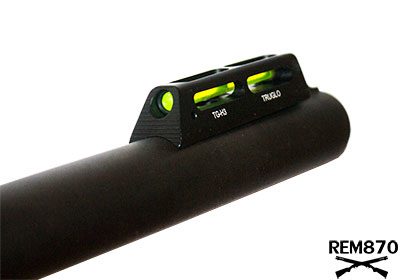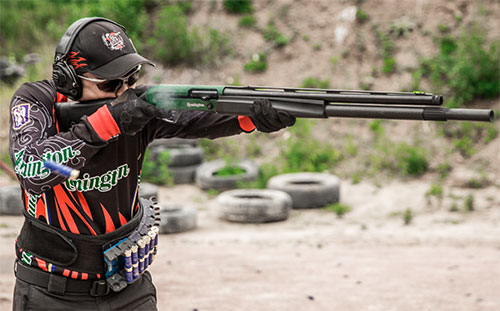Shotgun for Door Breaching
Shotgun for Door Breaching

Shotgun for Door Breaching
Breaching a door simply means forcing a door open that is locked or closed. Typically, this tactic is used by law enforcement, the military and sometime emergency services. When breaching using a firearm it is called ballistics breaching.
You want to breach the door without firing more shots than needed so this means you need the right weapon and ammunition. The weapon used is inches and sometime in actual contact with the door and the muzzle is typically angled downward to protect anyone inside the structure. If you place the muzzle flat against a surface without a muzzle adapter then there is nowhere for the escaping gases to go and it may increase the recoil dramatically. Usually the first round is fired at the lock/handle mechanism but some hardened doorways may require you also remove the hinges so this will require additional ammunition. Certain doors have the hinges hidden on the inside to help protect against ballistic breaches. Muzzle adapters are available for door breaching shotguns that allow gases to escape from the muzzle.
Some door breaching rounds do not have a projectial but are powdered filled such as the round the Department of Defense (DoD) uses. Once the metal cup containing the powder strikes the door the impact dissipates the energy on the door lock/hinge, this is called kinetic energy impact. The shell is a 12-guage and is described as “door breaching plastic cup” used with “un-choked shotguns”.
Remington has a breaching shotgun model called 870P™Breacher, which can fire 2 ¾ and 3″ rounds. The barrel has a threaded standoff meaning the muzzle is adapted to allow gases to escape. The barrel is 11.5 inches long with the standoff. It is assumed that if the standoff is threaded it can be removed. The magazine capacity is 3+1.
The weapon can fire the standard buckshot/birdshot and slug rounds but it also has a round for door breaching designed to mitigate collateral damage by not penetrating through the door. The round is called a Hatton round and it is a mixture of compressed powders, which are zinc and gunpowder along with wax. This round only causes localized damage and the muzzle must be pressed to the lock or hinge for best results.
Breaching a door simply means forcing a door open that is locked or closed. Typically, this tactic is used by law enforcement, the military and sometime emergency services. When breaching using a firearm it is called ballistics breaching.
You want to breach the door without firing more shots than needed so this means you need the right weapon and ammunition. The weapon used is inches and sometime in actual contact with the door and the muzzle is typically angled downward to protect anyone inside the structure. If you place the muzzle flat against a surface without a muzzle adapter then there is nowhere for the escaping gases to go and it may increase the recoil dramatically. Usually the first round is fired at the lock/handle mechanism but some hardened doorways may require you also remove the hinges so this will require additional ammunition. Certain doors have the hinges hidden on the inside to help protect against ballistic breaches. Muzzle adapters are available for door breaching shotguns that allow gases to escape from the muzzle.
Some door breaching rounds do not have a projectial but are powdered filled such as the round the Department of Defense (DoD) uses. Once the metal cup containing the powder strikes the door the impact dissipates the energy on the door lock/hinge, this is called kinetic energy impact. The shell is a 12-guage and is described as “door breaching plastic cup” used with “un-choked shotguns”.
Remington has a breaching shotgun model called 870P™Breacher, which can fire 2 ¾ and 3″ rounds. The barrel has a threaded standoff meaning the muzzle is adapted to allow gases to escape. The barrel is 11.5 inches long with the standoff. It is assumed that if the standoff is threaded it can be removed. The magazine capacity is 3+1.
The weapon can fire the standard buckshot/birdshot and slug rounds but it also has a round for door breaching designed to mitigate collateral damage by not penetrating through the door. The round is called a Hatton round and it is a mixture of compressed powders, which are zinc and gunpowder along with wax. This round only causes localized damage and the muzzle must be pressed to the lock or hinge for best results.
Related Post:




